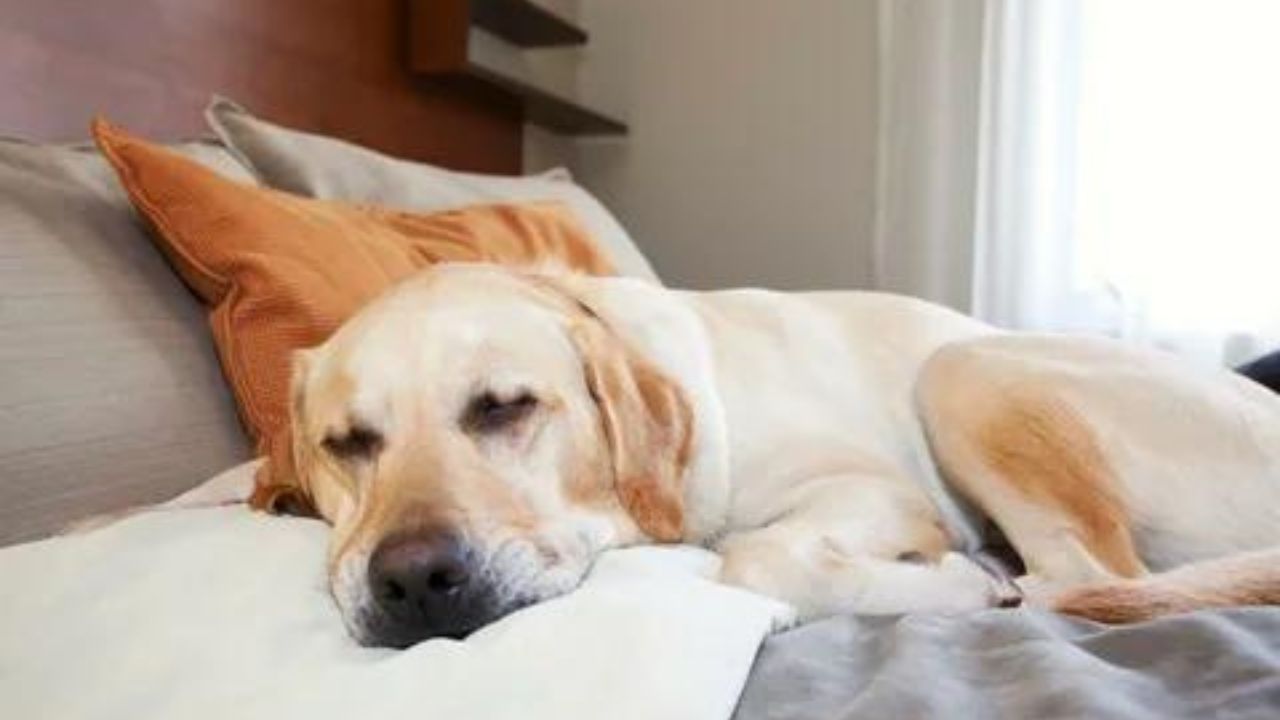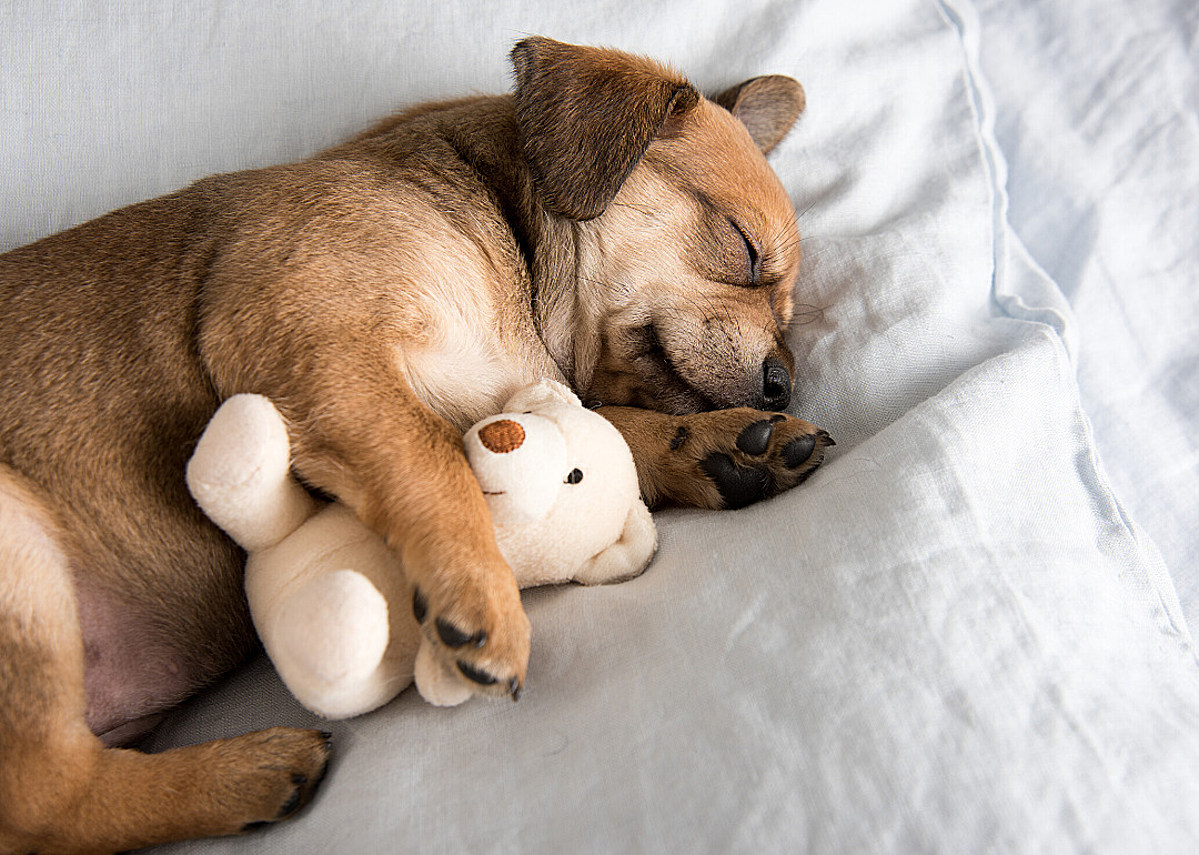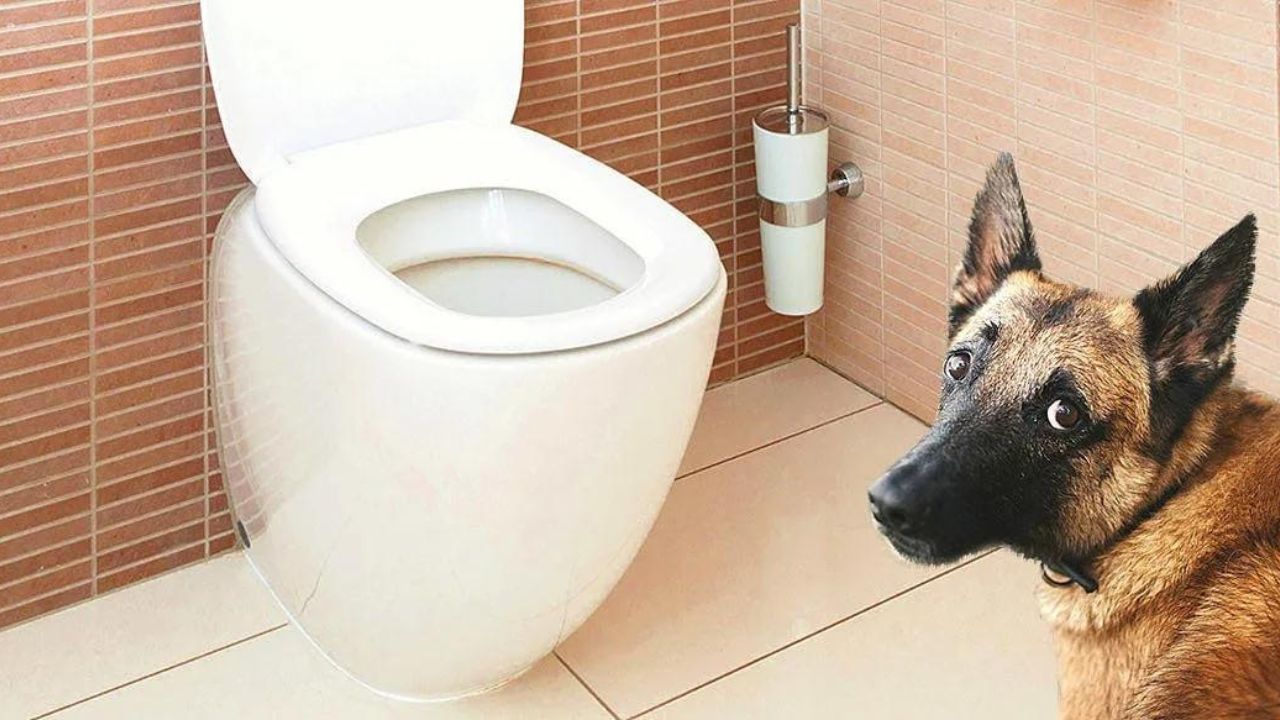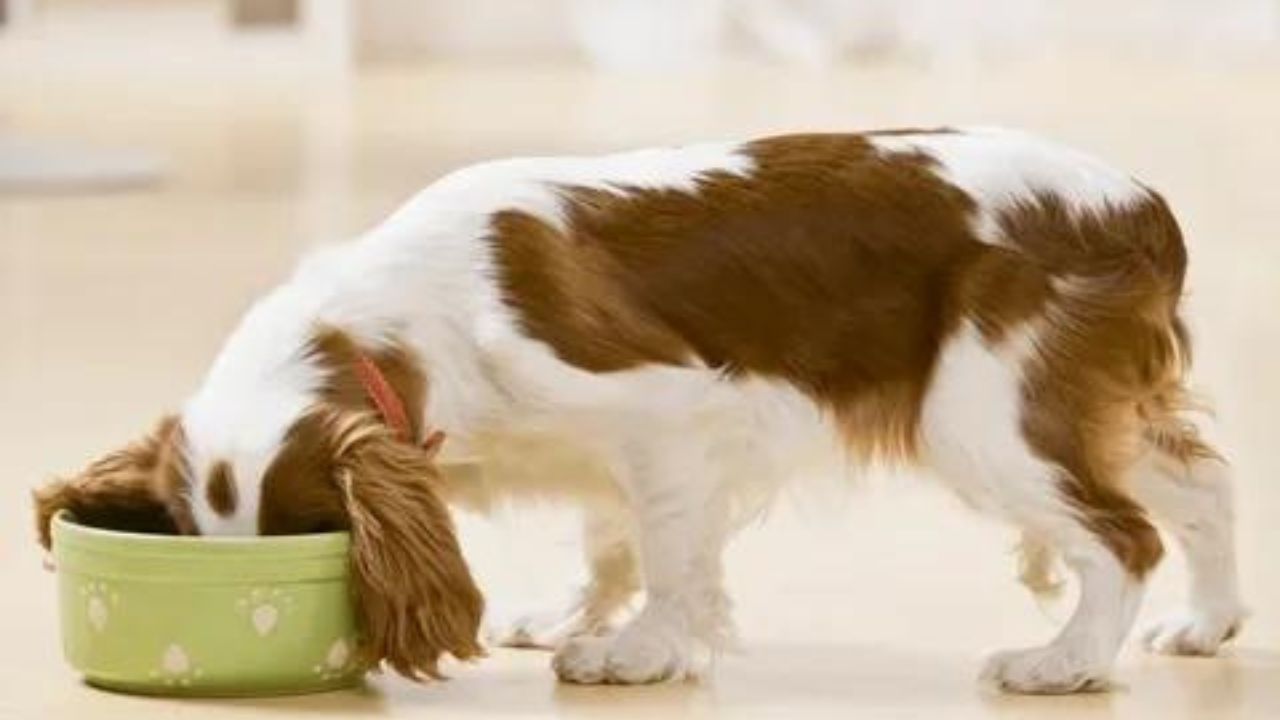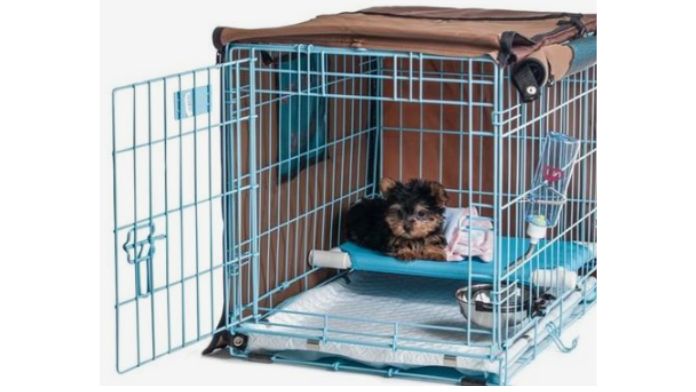
Congratulations on becoming a new puppy parent! From the endless snuggles to the chewed-up shoes, there’s nothing quite like the joys and challenges of raising a puppy. But crate training for puppies is one aspect of puppy training that can leave many new pet parents scratching their heads. If you’ve ever wondered how to train your puppy to nap in a crate, you’re in the right place!
Crate training is one of the most effective ways to teach your puppy proper potty habits, prevent destructive behavior, and provide a safe and comfortable resting place. But the thought of confining your furry friend to a crate can feel daunting, especially if you’re new to puppy parenting. The good news is that crate training is a process that, when done correctly, can be both rewarding and fun for you and your pup.
In this article, we’ll cover everything you need to know about how to train your puppy to nap in a crate. We’ll go over the benefits of crate training, how to choose the right crate size and type for your puppy, and step-by-step instructions for introducing your puppy to the crate and training them to nap in it. Plus, we’ll provide tips and tricks for troubleshooting common issues that may arise along the way. So, grab your pup, and let’s dive in!
Benefits of Crate Training for Puppies
Crate training is a valuable tool for any puppy parent. Not only can it help teach your furry friend proper potty habits and provide a safe and comfortable space for them to rest, prevent destructive behavior, and reduce anxiety. Here are some of the top benefits of crate training for puppies:
Safety and Security
A crate provides a secure space for your puppy, giving them a sense of safety and security. This is especially important during times of stress, such as when there are loud noises or unfamiliar visitors in the house. Additionally, a crate can prevent your puppy from getting into potentially dangerous situations, such as chewing on electrical cords or eating toxic substances.
Proper Potty Habits
Crate training can help teach your puppy proper potty habits. Puppies naturally avoid going to the bathroom where they sleep, so a crate can help establish a routine for potty breaks. By taking your puppy outside after they wake up from a nap in the crate or after they’ve been there for a certain amount of time, you can teach them that outside is the appropriate place to go potty.
Prevent Destructive Behavior
Puppies are instinctive to chewing and exploring, often resulting in destructive behavior. By confining your puppy to a crate when you can’t supervise them, you can prevent them from chewing on shoes or furniture. Over time, your puppy will learn that the crate is a safe and comfortable place to be, and they’ll be less likely to engage in destructive behavior outside the crate.
Comfort and Relaxation
A crate can be a comfortable and relaxing space for your puppy to rest. Providing a soft bed and toys makes the crate a cozy and inviting place for your pup to nap. This can be especially useful if your puppy gets overstimulated or anxious, as the crate provides a quiet space to relax and recharge.
Cate training can provide numerous benefits for you and your furry friend. You can help your puppy feel safe, secure, and comfortable in their new home by positively associating with the crate to teach proper potty habits and prevent destructive behavior.
Choosing the Right Crate for your Puppies
Choosing the right crate for your puppy is essential to successful crate training. The crate is a comfortable and secure space for your pup, and choosing the right size and type of crate can make a big difference in your pup’s overall experience. Here are some tips to help you choose the right crate for your furry friend:
Consider the Size of your Puppies
One of the most important factors to consider when choosing a crate is the size of your puppy. You’ll want to choose a crate that is big enough for your pup to stand up, turn around, and lie down comfortably but not so big that they have a lot of extra space. A too-big crate can make it harder for your puppy to feel secure and may even encourage them to use one end of the crate as a bathroom.
Consider your Puppies Breed
Some breeds may have specific crate size or type preferences based on size, personality, and behavior. For example, breeds like Dachshunds and French Bulldogs may prefer a smaller, more enclosed crate, while larger breeds like Golden Retrievers may prefer a larger crate with more open space.
Consider the Type of Crate
There are several types of crates available, including wire, plastic, and soft-sided crates. Each type has its advantages and disadvantages. Wire crates are sturdy and provide good ventilation but may not be as cozy as a plastic or soft-sided crate. Plastic crates are more enclosed and may feel cozier to some dogs but provide less ventilation. Soft-sided crates are lightweight and portable but may not be as durable as wire or plastic.
Consider your Puppies Behavior
Finally, consider your puppy’s behavior when choosing a crate. If your puppy is a chewer or an escape artist, you may need to choose a sturdier crate or take extra precautions to prevent them from damaging or escaping.
Considering these factors, you can choose a comfortable, secure, and appropriately sized crate for your puppy. Remember, crate training is a process, and choosing the right crate is just the first step towards helping your pup feel safe, happy, and well-rested in their new home.
Introducing your Puppies to the Crate
Introducing your puppy to the crate can be a fun and rewarding experience for you and your furry friend. But it’s important to remember that the process should be gradual and positive to ensure your puppy feels comfortable and secure in their new space. Here are some steps to follow when introducing your puppy to the crate:
- Make the crate inviting: Before introducing your puppy to it, ensure it’s a comfortable and inviting space. Add a soft bed or blanket, toys, and treats to entice your puppy to explore and enter the crate.
- Let your puppy explore: Encourage them to explore the crate on their terms. Leave the door open and let them sniff around and investigate the crate. You can also place treats or toys inside to entice them further.
- Use positive reinforcement: When your puppy enters the crate independently, praise and offer them a treat. This will help them associate the crate with positive experiences and encourage them to continue exploring the space.
- Start with short periods: Once your puppy is comfortable entering the crate, close the door for short periods. Stay nearby and offer praise and treats to help your puppy feel at ease.
- Gradually increase time spent in the crate: Gradually increase your puppy’s time. This will help them get used to being in the crate longer and make them more comfortable with the process.
It’s important to remember that every puppy is different and may take a long time to get used to the crate. Be patient and take things at your puppy’s pace. With a little time, patience, and positive reinforcement, your puppy will nap happily in their crate in no time.
Puppies Crate Training Tips
Crate training can be crucial in helping your furry friend become a well-behaved and happy companion. But, as with any training technique, it’s essential to do it correctly to avoid confusion or distress for your puppy. Here are some crate training tips to help make the process as smooth and enjoyable as possible:
Start Slow and Steady
Introduce your puppy to the crate gradually, and let them explore it at their own pace. Please don’t force them inside or close the door right away. Instead, encourage them with treats, toys, and praise to create positive associations with the crate.
Make it Cozy
Make the crate a comfortable and inviting place for your pup. Add a soft bed, blanket, or favorite toy to create a cozy den-like atmosphere. This will help your puppy feel safe and secure while inside.
Use positive reinforcement: Praise and reward your puppy every time they enter the crate or stays inside. Positive reinforcement will help them associate the crate with good behavior and create a positive experience.
Keep it Short and Sweet
Start with short periods in the crate, gradually increasing the duration as your puppy becomes more comfortable. Please only leave them alone in the crate briefly, especially at first. Puppies have small bladders and may need to go outside frequently.
Stick to a Routine
Establish a routine for puppies‘ crate training, including meal times, potty breaks, and napping. This will help your puppy develop a sense of structure and routine, making the crate training process more comfortable and predictable.
Avoid Punishment
Never use the crate as punishment for bad behavior. This can cause your puppy to feel anxious or scared, creating negative associations with the crate. Instead, use positive reinforcement to encourage good behavior.
Be Patient
Crate training takes time and patience. Don’t expect your puppy to be a crate pro overnight. Be consistent and patient; your furry friend will learn to love their cozy den in no time.
Remember, every puppy is unique, and crate training may take longer for some than others. But with these crate training tips and a little patience and consistency, your furry friend will nap happily in their crate in no time.
Some Common Puppies Crate Training Problems and Solutions
Crate training your puppies can be a wonderful way to keep your furry friend safe, secure, and comfortable. However, it can be a challenging process. Sometimes, despite your best efforts, your puppy may need help with crate training. Here are some common crate training problems and solutions to help you and your puppy overcome them.
Whining, Barking, and Crying
One of the most common issues pet parents experiences when crate training their puppies is excessive whining, barking, or crying. This can be frustrating for pet parents, but it’s important to understand that this behavior is a normal part of the crate training process. Puppies use vocalization to communicate their discomfort or anxiety. The good news is that there are several things you can do to reduce this behavior.
Solution: One solution to this problem is to ensure your puppy is tired and has had plenty of exercise before entering the crate. Another solution is slowly increasing your puppy’s time in the crate and gradually rewarding them for good behavior. You can also provide your puppy with a comfortable bed, toys, and treats to help them feel more comfortable in the crate.
Accidents in the Crate
Another common problem pet parents face when crate training their puppies is accidents in the crate. This can be frustrating and unpleasant for both you and your puppy.
Solution: Ensuring your puppy has ample opportunities to go potty outside the crate is important. Limiting the time your puppy spends in the crate and slowly increasing the amount of time as they become more comfortable is also important. Additionally, ensure that the crate is the appropriate size for your puppy and cleaned regularly.
Escaping from the Crate
If your puppy is determined to escape from the crate, it can be a serious problem. Not only can it damage your property, but it can also be dangerous for your puppy.
Solution: One solution to this problem is to ensure that the crate is the appropriate size and that your puppy can’t escape from it. You can also make the crate more inviting by providing comfortable bedding, toys, and treats. Additionally, you can desensitize your puppy to be in the crate by gradually increasing the amount of time they spend in it.
Conclusion
Training your puppy to nap in a crate can be a fun and rewarding experience for you and your furry friend. Not only does it provide them with a safe and comfortable place to rest, but it also helps them learn proper potty habits and prevent destructive behavior. Following the steps outlined in this article and being patient and consistent, you can successfully train your puppy to nap in a crate.
Remember, crate training should always be done positively and gradually, with plenty of rewards and encouragement. Always make sure your puppy has access to water, toys, and a comfortable bed or blanket in their crate. And never use the crate as a punishment or leave your puppy in it for extended periods.
If you encounter any difficulties along the way, don’t be discouraged. Crate training for puppies is a learning process for both you and your puppy. With time, patience, and persistence, your puppy will learn to love their crate and see it as a safe and comforting resting place.
Thank you for reading this article on how to train puppies to nap in a crate. We hope you found it informative and helpful. If you have any questions or comments, please leave them below. Happy training!

